Europe is known for a lot of things and chief among them are its oldest buildings. Most of these buildings were constructed thousands of years ago. As a result, the old buildings became a monument of the past that gives us a glimpse of the lives of our ancestors.
In this post, let us go through the buildings that have stood against the test of time. The buildings in this list are structures made by humans. The buildings should still be recognizable as a building and their major structures are still intact.
So, without any further delay, let’s get on our list today!
10. West Kennet Long Barrow
Year first built: 3650 BC
Country: England (United Kingdom)
Purpose: tomb
Approximate age (as of August 2022): 5,670 years old
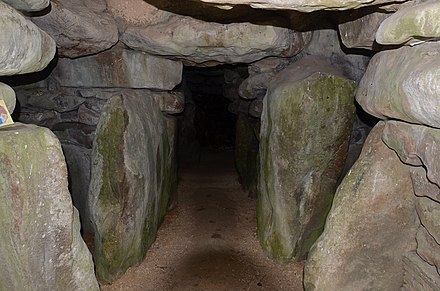
Also known as South Long Barrow, the West Kennet Long Barrow is located near Avebury village in Wiltshire. When it was first built, its original purpose was to serve as a tomb.
The pastoral communities around the West Kennet Long Barrow built the gravesite. How the tomb was built is also interesting. According to researchers, the long barrow was made out of the earth.
Did You Know?
The West Kennet Long Barrow is partially reconstructed. As a tomb, there are about 50 people buried here. For some time, it was abandoned. Later, it was used as a place where both humans and animals were buried in the site. The long barrow is not part of the Avebury World Heritage Site.
9. Dolmen of Menga
Year first built: 3600 BC
Country: Spain
Purpose: tomb
Approximate age (as of August 2022): 5,620 years old
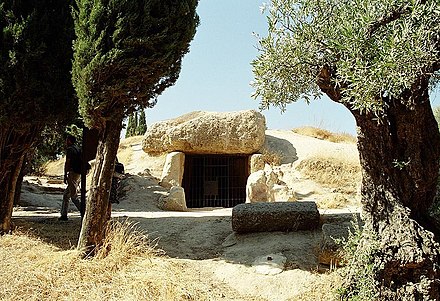
The Dolmen of Menga is a megalithic structure that comes with 32 vertical megaliths that support a large, flat, and horizontal capstone. The largest megalith is about 200 tons in weight.
Standing about 3.5 meters high, 6 meters wide, and 27.5 meters long, the Dolmen of Menga is a sight to behold. According to historians, the dolmen, which is located in Antequera, Malaga, Spain, was used as a gravesite for departed members of the ruling family in the region.
Did You Know?
The Dolmen of Menga is just one of the three similar structures around the area. The other ones are the Dolmen de Viera and the Tholos de El Romeral. In 2016, the three sites were collectively known as the Antequera Dolmens Site and considered a Unesco World Heritage Site.
8. Ġgantija
Year first built: 3600 BC
Country: Malta
Purpose: Temple
Approximate age (as of August 2022): 5,620 years old
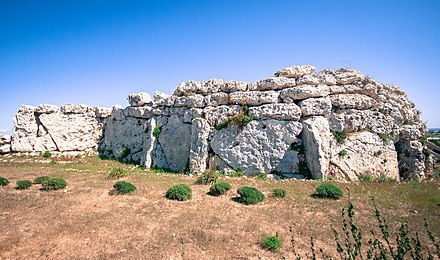
Ġgantija is a Maltese word that means giantess. Located on Gozo island in Malta, the megalithic structure is known to be a temple complex during the Neolithic age.
The Ġgantija is known to be older than the Egyptian pyramids. It is also considered to be the number two oldest religious structure that exists today, just next to Turkey’s Göbekli Tepe.
As a temple, the Ġgantija is used in fertility rites. Researchers have found a lot of statues and figurines that support this conclusion.
Did You Know?
The Ġgantija is actually a complex with three temples, but the third one wasn’t completed. Among the three temples, the second one was the most intact, which is believed to have been built around 3,600 BC.
7. Knap of Howar
Year first built: 3700 BC
Country: Scotland (United Kingdom)
Purpose: House
Approximate age (as of August 2022): 5,720 years old
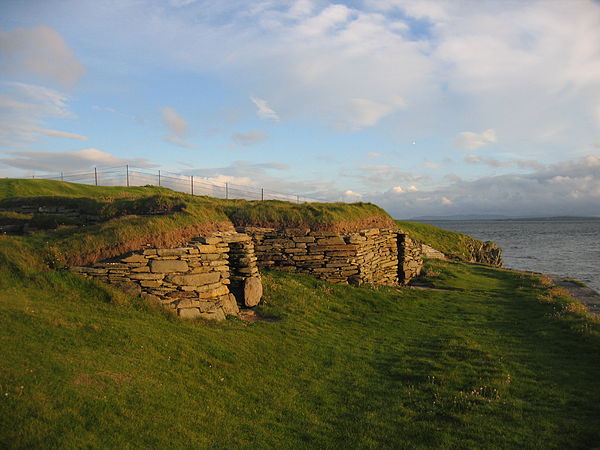
If you are looking for the oldest stone houses in northern Europe, then Knap of Howar is the answer to your search. It is found in Scotland, on the Papa Westray island in Orkney.
According to radiocarbon dating, the Knap of Howar was built in 3,700 BC and was occupied until 2,800 BC. For most, it could be the ideal vacation home as its doorways face the sea while its walls were made of thick stones. The place looks dreamy and close to nature.
Did You Know?
Although thousands of years have passed, the Knap of Howar was incredibly preserved. Inside, you would still find stone furniture, beds, storage shelves, and partition screens.
6. La Hougue Bie
Year first built: 4,000-3,500 BC
Country: Jersey
Purpose: Gravesite
Approximate age (as of August 2022): 5,520-6,020 years old
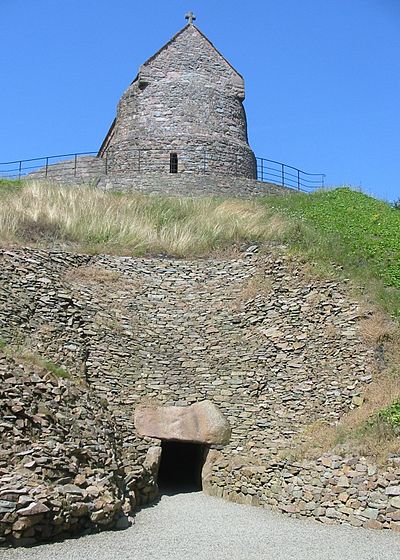
Considered to be a historic site, the La Hougue Bie proudly stands in Grouville, Jersey and it was featured in the Jersey 1 pound note in 2010.
The term Hougue means mound and heap, which came from haugr, an Old Norse word. However, experts aren’t really sure what the term Bie means. As this might be the case, people loosely translate it as “a building on the earth mound.”
Did You Know?
La Hougue Bie comes with a passage chamber, which is more than 18 meters in length. The passage is surrounded by an earth mound of about 12.2 meters in height. Today, you can see two Medieval chapels built on top of the mound.
5. Monte d’Accoddi
Year first built: 4,000-3,650 BC
Country: Italy
Purpose: temple, place of worship
Approximate age (as of August 2022): 5,670-6,020 years old
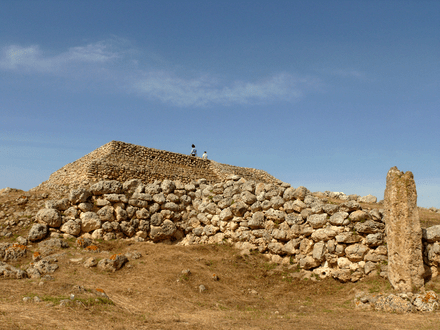
The purpose of Monte d’Accoddi has been a subject of speculation. Because of an altar-like structure on top of its colossal raised platform, it was thought to be a temple where the Ozieri people worshiped.
Others see the stone structure as a step pyramid and a vantage point for observing the sky and surrounding area. The reason for this conclusion is that there are no entrances around the platform. There are even no chambers.
Found in northern Sardinia, the Monte d’Accoddi is a huge structure. Its base is about 27 meters by 27 meters. Its height can be as high as 5.5 meters.
Did You Know?
The first structure was destroyed presumably by fire. Later, around 2,800 BC, people around the area rebuilt the mound by adding a second platform on top of the first one.
4. Saint-Michel tumulus
Year first built: 4,500 BC
Country: France
Purpose: gravesite
Approximate age (as of August 2022): 6,520 years
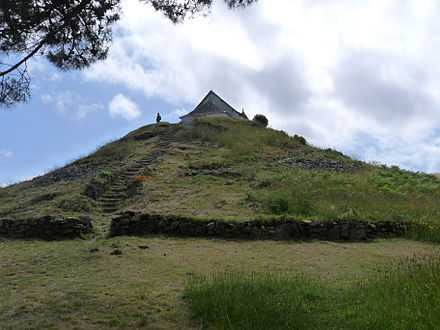
Found in the East direction of Carnac in Brittany, France, the Saint-Michel Tumulus is considered to be the largest tumulus in Europe. It has a length of 125 meters, a width of 60 meters, and a height of 10 meters.
During the mound’s exploration in 1862, archeologists found various prestigious artifacts such as flint tools, pearls, axes, and sillimanite. Finally, in 1889, the tumulus was designated as a National Heritage Site.
Did You Know?
This megalithic grave mound was built in separate stages but in just a short time. No one is really sure when it was exactly built but the majority of researchers agree that it could be around the fifth millennium BC. When you visit the place, you’ll find a chapel on top of the mound.
3. Tumulus of Bougon
Year first built: 4,800 BC
Country: France
Purpose: gravesite
Approximate age (as of August 2022): 6,820 years
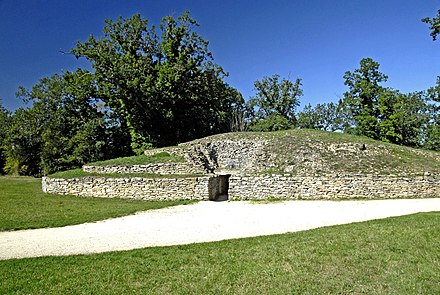
Also known as the Necropolis of Bougon, the Tumulus of Bougon is a place of the dead. It consists of six Neolithic tumulus groups (Tumulus A, B, C, D, E, F) and each of them is a protected monument in France after it was given to the department of Deux-Sèvres starting in 1873.
The tumuli come in different shapes and structures. Some are round and oval while others are elongated and rectangular in shape.
Did You Know?
The Tumulus of Bougon was built by people who live around the area. The site was known to be among the oldest architectural examples of cemeteries in the world. During excavation, hundreds of human remains were found at the site.
2. Barnenez
Year first built: 4,800 BC
Country: France
Purpose: Passage grave
Approximate age (as of August 2022): 6,820 years
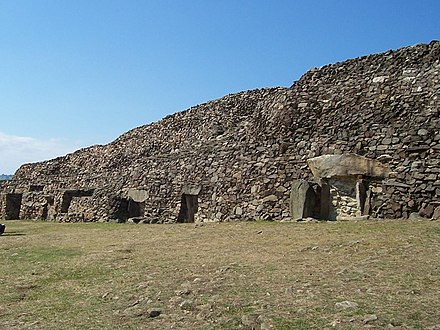
Also known as Barnenez Tumulus and Barnenez Mound, the Cairn of Barnenez was built during the Neolithic period. The megalithic monument served as a grave for various people and was later abandoned. After a few centuries, the place was once again reused during the Bronze Age, about 3,000 BC.
The Barnenez was first found in 1807 when the place underwent comprehensive real-estate mapping. In 1850, the place was then scientifically recognized as a tumulus.
Did You Know?
The Barnenez was not immediately protected as an ancient and historic site. It was only in the late 1950s that its ownership was transferred from private entities to the government. Before that, the place was used as a quarry, which threatened the integrity of the monument.
1. Solnitsata
Year first built: 5,500 BC
Country: Bulgaria
Purpose: Settlement
Approximate age (as of August 2022): 7520 years
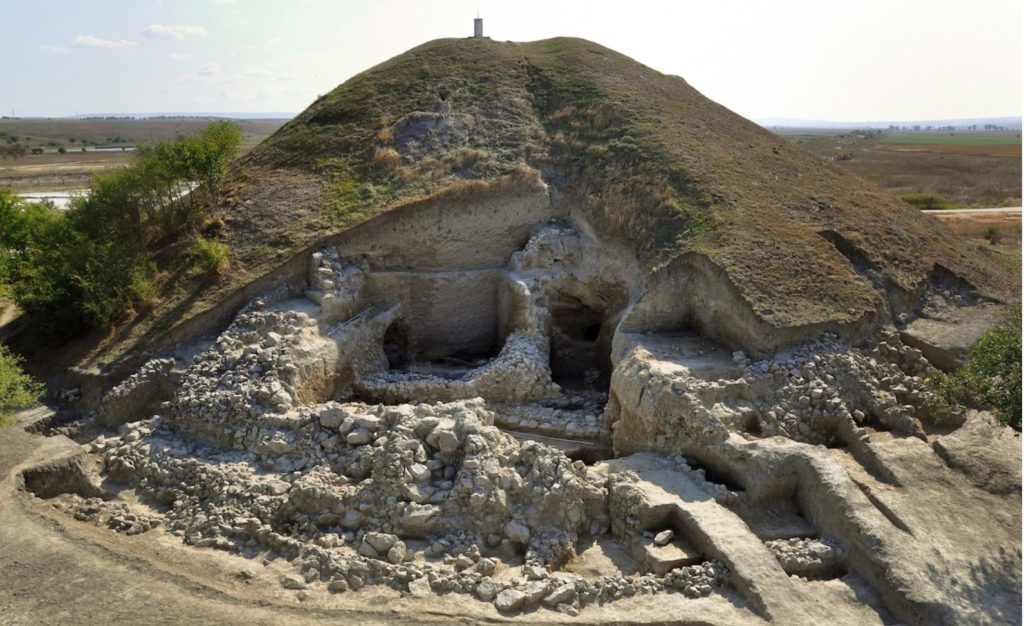
Solnitsa has structures that are considered to be the oldest building in Europe. Solnitsa is believed to be the oldest town not just in Bulgaria, but in the entire European continent. As a prehistoric town, it’s a settlement primarily made of fortified stone.
The ancient town is known for its pottery and salt production.
Did You Know?
Archeologists believe that Solnitsa was destroyed by a strong earthquake. Experts determined that there are about 350 residents in this place. As this might be the case, they already consider Solnitsa as a city. The walls were there to protect salt from the external environment and the intrusion of people.











